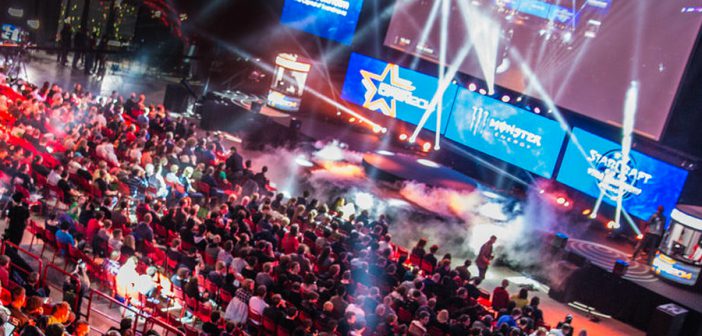Perpetually on the hunt for young men, brands are betting on eSports
This past week, Spanish football club Valencia CF announced a new team, not of footballers but of video gamers.
Competitive gaming is fast becoming legitimate, with star players, huge winnings and audiences in the millions. The 2015 finals for the gaming title League of Legends, for instance, brought in more viewers than the NBA (36 million vs. 19.9 million).
The numbers are becoming irresistible to brands, which are drawn to gaming’s millennial fans, despite its trash-talking fans who are fiercely protective of their online culture. Newzoo estimates brand sponsorships for all eSports will reach $128.2 million (£88.4 million) this year, while online advertising on eSports video content will grow to $197 million (£137.4 million). That’s a 49 percent increase over 2015 for both combined.
The interest from brands has been so great this year that talent agency WME IMG recently hired two more salespeople to service the accounts. “Of the top 10 advertisers globally, every single one is interested in the sport,” said Tobias Sherman, global head of eSports there. “2017 is going to be the big year for non-endemics coming in.”
The appeal is the people between 18 and 34 who are hard to reach via other channels and prolific ad-blockers yet make up almost half of the global eSports audience. For brands which are now moving more budget into digital, it’s too good an opportunity to miss.
“It’s a strong statement to make when you hit that younger audience, and also there’s the commercial advantage of getting in early at a good price,” said Joel Seymour-Hyde, vp of strategy for sports sponsorship agency Octagon.
Unlike traditional sports, the lines between those putting on, managing and broadcasting eSports events can be blurred. For brands, it’s not as simple as contacting a player’s agent or a league’s management. They have to negotiate a complex rights package with multiple stakeholders, many of whom have more than one function.
But one advantage of eSports being young is that brands can get more bang for their buck as they can carve out their own deals and, importantly, haggle.
The cost of reaching an eSports fan is one-eighth the cost of reaching a mainstream sports fan, said Christian Baker, digital manager at Synergy, another sports sponsorship agency, which is working on a number of eSports deals that will be announced later this year. “There is a huge opportunity here for brands,” he said.
But cheap doesn’t equal easy. Those with little experience of the industry are prone to get it wrong — which is why some brands are holding back. While Coke’s meme-heavy eSports Twitter account is thriving with 348,000 followers, Comcast’s sponsorship of eSports company ESL was seen by some as an attempt to slap its name on something with no regard for brand relevancy.
So uh, is @ESL trolling with a @comcast partnership? I get wanting to partner w/ big players but the most hated company worldwide seems odd.
— Radio Esports Guy (@KevinKnocke) June 2, 2016
“It’s a world where users can hide behind avatars. There’s a danger of being trolled if you’re not adding value or seen to be part of the community,” Baker said.
It’s not just brands being trolled. Scroll through any live stream on Twitch, and you’ll find a torrent of abuse against anyone other than straight, white men. And it’s not just from the comments section. There’s also salty language coming from players and commentators themselves.
For brands that require editorial control, this is a deal-breaker. But for others, it’s a reality of the online experience they’ve come to accept. Meanwhile, the likes of WME IMG are trying to make players act more like role models.
“Cynically, I think the potential reward pot for being involved now has now gone over the tipping point where brands can go, ‘Hey, we know there are issues, and those issues are important ones, but we’re going to get involved and try to help you solve them,’” Baker said.
This article first appeared in www.digiday.com




